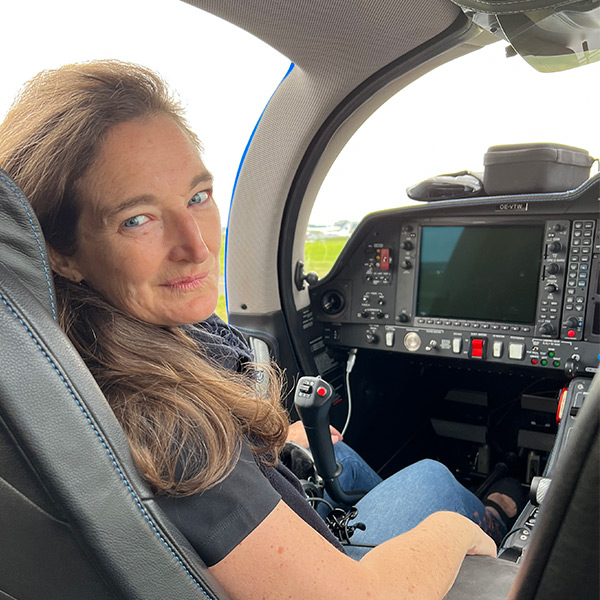WAAS incorporates 25 reference stations on the ground that listen to the satellite transmissions from the 24 satellites in the primary GPS constellation and two master stations whose computers fix any errors. Then, three ground stations deliver a signal correction to two geostationary satellites, which send the signal to any WAAS-capable receiver. The resulting accuracy puts you within a wingspan of where the receiver says you are -- whether you're on an instrument approach or barreling around in the hinterlands. (If your hinterlands include Maine and the extreme southwestern United States, you may not have access to the WAAS correction about 10 percent of the time -- but you can still pull in the basic GPS signal even if you can't get WAAS.)
To fly an LPV approach, your GPS must be either a Class 3 or 4 TSO-c146 WAAS unit, meaning that it's certified under this technical standard order (TSO) to a given level. Garmin refers to these levels as "gamma-1, -2, and -3," with gamma-3 receivers capable of providing LPV guidance.
Garmin GNS 480
Price: $11,995 for the 480For more information: www.garmin.com
The panel-mount WAAS GPS navigator currently on the market is the Garmin AT GNS 480 (see "Pilot Products: Garmin announces WAAS-approach-capable GPS navigator," January 2005 AOPA Flight Training), but several other solutions are on the horizon. Several GPS handheld receivers use the WAAS signal; though they don't meet the TSO for instrument approaches, they still deliver the more accurate signal for position reference.
The 480, a gamma-3 receiver, is an upgrade to the CNX 80 that allows the unit to receive the WAAS-corrected GPS signal and fly LPV approaches. A similar upgrade is planned for Garmin's GNS 530 and 430 navigators by the end of 2005, according to the company, and the upgrade will cost roughly $1,500 for current 430 and 530 owners.
Chelton FlightLogic
Price: $71,000 for a two-screen EFISFor more information: www.cheltonflightsystems.com
Other WAAS-capable boxes for 2005 include offerings from Chelton Flight Systems and Honeywell. Chelton's FlightLogic electronic flight information system (EFIS) is currently capable of flying approaches to LNAV/VNAV minimums, using baro VNAV (a vertical navigation path generated by a sophisticated, business-jet-style flight management system using altimetry and other inputs) with the corresponding very cold temperature limitations (see "Pilot Products: New in avionics," March 2004 AOPA Flight Training). According to company President Gordon Pratt, Chelton expects its FreeFlight GPS used by the EFIS to be LPV-capable by summer 2005.
Honeywell Bendix/King Apex
For more information: www.bendixking.comHoneywell has developed a WAAS "engine" and plans its first delivery of WAAS-capable equipment this year in the Apex EFIS. The Apex EFIS is positioned for high-end light aircraft such as the Extra 500 single-engine turboprop airplane, and it includes two 10.4-inch active matrix liquid crystal displays, Mode S transponder (which delivers altitude and other aircraft information along with the aircraft's transponder code to air traffic control), traffic advisory system, enhanced ground proximity warning system, and solid-state air data attitude heading reference system. The WAAS engine will be integrated with other Honeywell Bendix/King products shortly thereafter, and an upgrade or exchange path will be provided for existing customers.
Chelton AP-3C
Price: $11,000For more information: www.cheltonaviation.com
Not all the news includes WAAS, however. Chelton Aviation recently debuted its AP-3C autopilot. The AP-3C is a three-component digital autopilot built specifically for the general aviation market using solid-state electronics to achieve a lightweight yet high-quality design.
The AP-3C consists of a panel-mount controller, a roll servo, and a pitch servo. Attitude information can consist of digital or analog input from an attitude indicator (vacuum or electric) or attitude heading reference system, in addition to an altitude pressure sensor through a separate static port on the controller. If there is a back-up system installed in the airplane, whether a standby vacuum pump or back-up attitude indicator, an external switch can toggle between the sources for the autopilot.
One standout feature is the pitch servo, which uses the pitch-trim actuator to manage aircraft pitch rather than an elevator servo. This means the airplane remains "in trim" the entire time that the autopilot is engaged. Autopilots using a servo on the elevator itself may end up working against the pitch trim if the airplane isn't properly trimmed for its current airspeed. When you turn off the AP-3C, there won't be any wild pitch excursion that sometimes happens when an autopilot commands an out-of-trim airplane.
The other key difference between this and existing autopilots found in many training aircraft is that it uses digital information rather than relying solely on analog inputs (from a bug on the heading indicator or the needle of VOR course deviation indicator). A digital autopilot takes its course information through the ARINC 429 data line from the GPS/nav/com for more precise tracking, and uses a microprocessor to sort the digital and analog inputs in order to command the airplane. As of this writing, vertical inputs such as altitude and vertical speed still come solely from analog sources (the altimeter and vertical speed indicator), but soon navigators such as the Garmin 480 and Chelton EFIS will be ready to send vertical information from the GPS, and the AP-3C will be ready to put these inputs to use.
Garmin G1000
Price: varies with installationFor more information: www.garmin.com, www.mooney.com, www.cessna.com
Garmin also certified its G1000 EFIS in new Mooney Ovation2s and Bravos, with the system coming to Cessna 172s in April, according to the latest information available at press time from Cessna Aircraft Company (see "Pilot Products: New in avionics," March 2004 AOPA Flight Training).

